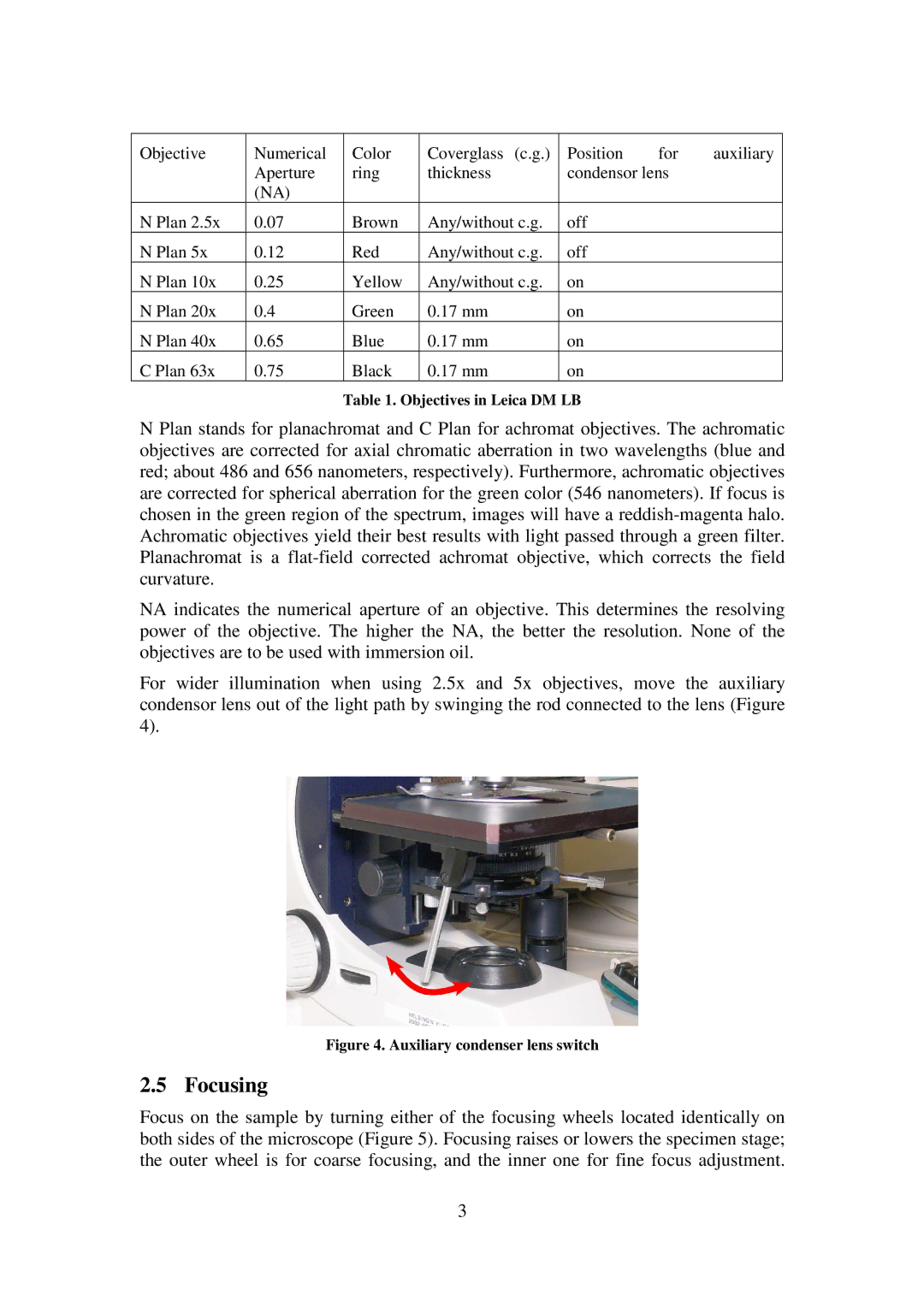
Objective | Numerical | Color | Coverglass (c.g.) | Position | for | auxiliary |
| Aperture | ring | thickness | condensor lens |
| |
| (NA) |
|
|
|
|
|
N Plan 2.5x | 0.07 | Brown | Any/without c.g. | off |
|
|
N Plan 5x | 0.12 | Red | Any/without c.g. | off |
|
|
N Plan 10x | 0.25 | Yellow | Any/without c.g. | on |
|
|
N Plan 20x | 0.4 | Green | 0.17 mm | on |
|
|
N Plan 40x | 0.65 | Blue | 0.17 mm | on |
|
|
C Plan 63x | 0.75 | Black | 0.17 mm | on |
|
|
|
| Table 1. Objectives in Leica DM LB |
|
| ||
N Plan stands for planachromat and C Plan for achromat objectives. The achromatic objectives are corrected for axial chromatic aberration in two wavelengths (blue and red; about 486 and 656 nanometers, respectively). Furthermore, achromatic objectives are corrected for spherical aberration for the green color (546 nanometers). If focus is chosen in the green region of the spectrum, images will have a
NA indicates the numerical aperture of an objective. This determines the resolving power of the objective. The higher the NA, the better the resolution. None of the objectives are to be used with immersion oil.
For wider illumination when using 2.5x and 5x objectives, move the auxiliary condensor lens out of the light path by swinging the rod connected to the lens (Figure 4).
Figure 4. Auxiliary condenser lens switch
2.5 Focusing
Focus on the sample by turning either of the focusing wheels located identically on both sides of the microscope (Figure 5). Focusing raises or lowers the specimen stage; the outer wheel is for coarse focusing, and the inner one for fine focus adjustment.
3
